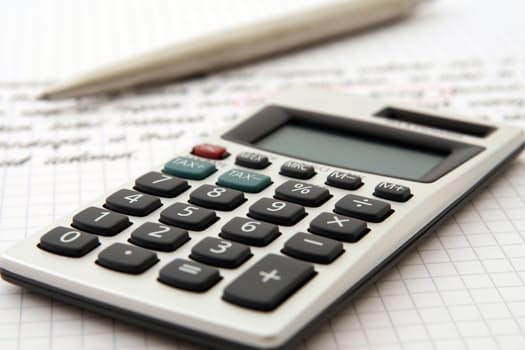
Real estate investors use a great number of formulas and ratios to determine the feasibility of investing in a particular property or project. Below is a brief and simplified explanation of the most commonly used formulas used to analyze real estate investments:
Debt to Income Ratio
What it Measures
The percentage of monthly income that goes towards making debt payments, including mortgages, student loans, car loans, credit card payments and child support.
Formula
Debt to Income Ratio = Total Debt Payments / Total Income
Detail
This is one of the most widely ratios used by loan underwriters before approving/rejecting a loan application. Typically, lenders want to see no more than 36% of a borrower’s income going towards debt payments.
Capitalization Rate (aka Cap Rate)
What it Measures
The rate of return on a real estate investment based on a property’s income in relation to its price. Cap rate calculations assume that a property is paid for all-cash and does not consider debt financing.
Formula
Cap Rate = Net Income / Price
Detail
The cap rate for a property must be compared to that of similar properties or investment assets to determine if a property is worth purchasing or not. The higher the cap rate, the more attractive the investment. Cap rates typically range from 3-12%.
Loan to Value (LTV)
What it Measures
The size of a loan compared to the value of the property securing the loan. This formula is mostly used by loan underwriters to assess the risk of a loan versus its collateral.
Formula
LTV = Mortgage Amount / Appraised Value of the Property
Detail
Typically, a maximum LTV of 80% is required before a lender will approve a loan for a given property. This means that for a house worth $200K, the maximum loan amount approved by the lender will be $160K. If a buyer wishes to purchase a more expensive house, the borrower will either need to come up with a greater down payment, or they will need to buy Private Mortgage Insurance (PMI) amount to protect the lender against a loan default.
Absorption Rate for Home Sales
What it Measures
The number of months it would take to sell all the currently listed homes on the market. It is used to predict sales activity.
Formula
Absorption Rate = Number of Active Homes x Rate of Home Sales
*To calculate the Rate of Home Sales (Time Frame / Number of Home Sales)
Detail
An absorption rate of 20% usually means homes are selling quickly (sellers market).
Vacancy Rate
What it Measures
The percentage of all vacant units in a property. It is opposite the occupancy rate. Both rates should add up to 100%.
Formula
Vacancy Rate = Number of Vacant Units / Total Number of Units
Detail
In an ideal world, vacancy rates should be zero. However, investors and lenders typically assume a 10% vacancy rate.
Return on Investment (ROI)
What it Measures
The return on an investment.
Formula
ROI = (Total Revenue – Investment Cost / Investment Cost) x 100
Detail
There is no standard ROI rate. The ROI for an investment is compared to that of similar investments in the same asset class. In theory, any positive ROI (profit) is good.
Cash on Cash Return
What it Measures
The cash flow performance of income-producing assets, based on the amount of cash invested.
Formula
Cash-on-Cash Return = Annual Before Tax Cash Flow / Total Cash Invested
Detail
Similar to cap rates, cash-on-cash rates must be compared to that of similar properties or investment assets to determine if a property is worth purchasing or not. The higher the cash-on-cash rate, the more attractive the investment. Cash-on-cash rates typically range from 6-12%.
Gross Rent Multiplier (GRM)
What it Measures
The financial performance of income -producing/rental properties. Basically, GRM tells you how long it takes for a property to “pay for itself”.
Formula
GRM = Price / Potential Gross Income
Detail
GRM’s must be compared to that of similar properties or investment assets to determine if a property is worth purchasing or not. The lower the GRM (i.e. the faster the property pays for itself), the more attractive the investment.
For instance, a property priced $500,000 which brings in $5,000 per month in rents ($60,000 per year):
GRM = 500,000 / 60,000
GRM = 8.33 Yrs.
Therefore, it will take 8.33 years for this property to pay for itself. Realistically, however, rents will probably be hiked over the years, improving the GRM.
Debt Service Coverage Ratio (DSCR)
What it Measures
How large a commercial loan can be supported by the cash flow generated from a property.
Formula
DSCR = Annual Net Operating Income / Annual Debt Service
Detail
Each lender has their own DSCR parameters. However, in almost all cases a DSCR of greater than 1 is required (i.e. your income is higher than your debt service). In general, a DSCR below 1 shows that an investor does not have enough cash on hand to comfortably cover loan payments. Typically, lenders are looking for ratios of 1.25 or higher.